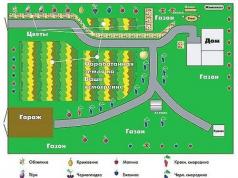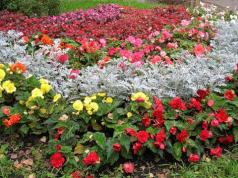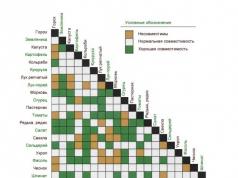Picking mushrooms is an exciting and useful activity in every sense, but quite difficult. Indeed, some representatives of this kingdom have dangerous poisonous doubles, which not everyone can recognize. In particular, it is important to know how to distinguish edible mushrooms from false ones: the main signs characteristic of each species, as well as subtleties and tricks, after which you will definitely not pick and eat the wrong mushroom.
How to distinguish edible mushrooms from false ones?
Initially, it is worth understanding how the correct honey agaric looks like, and what features are characteristic of it. After that, it is already possible to consider groups of false mushrooms, isolating their key differences from the edible species, since they have a lot of poisonous twins.
Three species of mushrooms are used for food out of the existing 34: these are summer, autumn and winter, mostly growing on stumps. Of the entire vast family, a different habitat - namely, meadows - is characteristic only of the meadow agaric.
Winter mushrooms are best known to mushroom pickers, although the time from the collection, as the name already implies, is by no means rainy autumn. They go after winter mushrooms when it snows. They are found mainly on deciduous trees that have damage, as well as on poplars or willows. The cap of the winter honey agaric is small, does not exceed 10 cm in diameter, is absolutely flat, has a brown-red color, but sometimes it turns pale to golden yellow. In young mushrooms, color unevenness was noted: the highest concentration of color is in the center, and the edge is only barely touched by a shade. The dense tubular leg is painted in deep brown, barely reaches a height of 7 cm. The plates under the cap are thin and sparse.
Among other species of mushrooms, this one grows in the densest family: up to 50 mushrooms can be counted from 1 outlet. The caps are quite large, reaching 17-18 cm in diameter, the color is uniform, olive-brown, darkens with age. The shape of the cap depends on how long the mushroom has lived. Young specimens have a convex core, mature specimens have wavy edges. The stem is short, 10 cm in height, may be covered with sparse scales, which sometimes pass to the caps of young mushrooms.
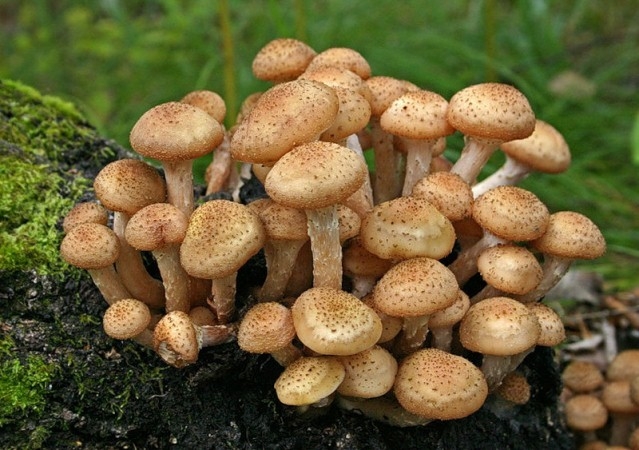
Summer honey agaric is the last representative of edible species of mushrooms. It grows in areas of deciduous forests, like winter honey agaric. Its period mirrors the collection period of the latter: from the beginning of spring to the end of autumn, marked by snowfall. From 1 rosette of mushrooms, a little less grows than that of autumn honey agaric: up to 30-40 pieces, but their main place is rotten stumps and fallen trees. The cap is small, up to 5-6 cm in diameter, curved in young individuals and only with a small tubercle in the center in mature ones. The color is golden brown, darkens in high humidity and brightens in dry periods.
The cap is so thin that it can become translucent when the color changes. Only the grooves at the edge remain unchanged, as well as a slight mucous surface. The height of the stem is almost equal to this indicator for winter honey agaric - 6-7 cm, the density is the same, and the main difference, in addition to the time of appearance, is small scales under the ring.
Honey mushrooms are false and edible: photos and key features
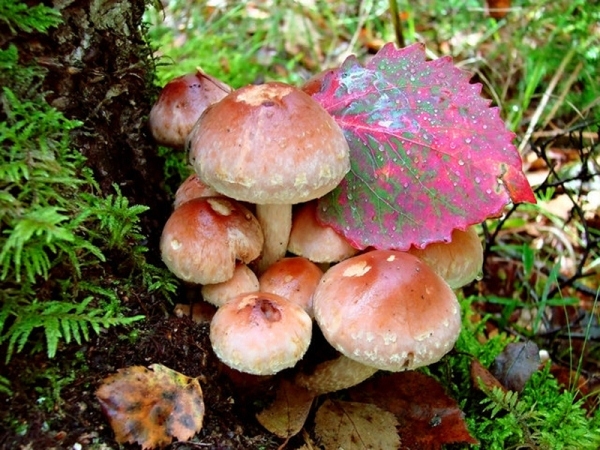
Now that you know what types of mushrooms are eaten, you can consider a group of their false counterparts and highlight the features of these twins. It is impossible to mention absolutely all specimens, since there are more than 30 of them, but far from all are found in the middle lane.
Outwardly, false mushrooms can easily confuse at least the place of their growth. They, just like edible ones, settle on damaged areas of trees and stumps, and also grow immediately in families, densely gathering in a “bush” of 30-40 individuals. With the color and shape of the hat, they also try to resemble their edible counterparts, but here everything is no longer so perfect. In particular, the edges of the cap of a false mushroom often look messy, as if someone had cut them off - they can hang down in thin translucent flakes, which is often mistaken by inexperienced mushroom pickers for the remnants of a membranous ring.
This is the most important sign that will help you identify honey agaric - a membranous ring located under the cap. Its edges go down, which is why some mushroom pickers call it a “skirt” for ease of understanding. This ring is the remnant of the film that protected the body of the fungus at the initial stage of development, and it is inherent only in edible mushrooms. False species do not have it at all.
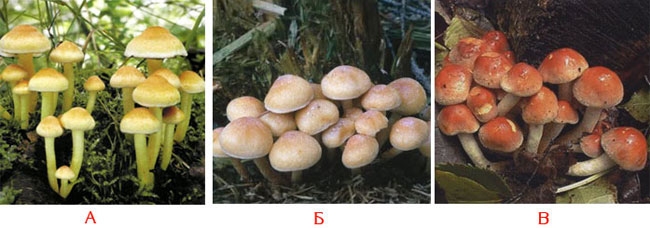
However, for some reason, an edible honey agaric may lose its “skirt”, so you should pay attention to other details. For example, the color of the hat. As you can see from the information presented earlier, edible mushrooms are characterized by a range of golden brown hues, muted and deep. The same cannot be said about false mushrooms: they only attract attention with their color and signal danger, like a bright red fly agaric. The bulk of false mushrooms have brick-red, acid-yellow and similar hats in color, and in some cases canary-yellow legs are also seen. In addition, the grayish shade of the cap also indicates that the honey agaric in front of your eyes is not edible.
Next, you need to look under the hat, considering the shade of the plates adjacent to it. If they have an absolutely unattractive green or yellow color, or are generally prone to blackening, you are holding a false honey agaric in your hands. Edible species in any color of the cap are always characterized by cream or golden-white plates. On the same hat, attention can be paid to the presence of small scales, but this factor should be taken into account only when a young mushroom was awarded the study. Mature individuals, as noted earlier, have a completely smooth surface.
Video to help and advice for beginner mushroom pickers

So, the main parameters that make it possible to attribute the met mushroom to a false or edible group are the color of the cap and plates, the presence or absence of gray-brown scales concentrated in the center of the cap, and the membranous ring. It is necessary to check every detail, because, for example, a summer false mushroom almost does not differ in color from its edible counterpart - it is just as delicate, not conspicuous.
The smooth plate of a mature individual, and even the height of the stem with the diameter of the cap, will not cause suspicion: everything here is almost identical to the edible mushroom. In some cases, there is also a remnant of the membranous bedspread. The decisive factor is the color of the plates - gray-yellow, absolutely unattractive, the same shade of mushroom pulp, and a hollow leg. In contrast to it, in the edible summer honey agaric, it is strong and dense. At this point, inexperienced mushroom pickers rarely pay attention, but in vain: it is by breaking the mushroom that you can say with accuracy whether it is worth eating.
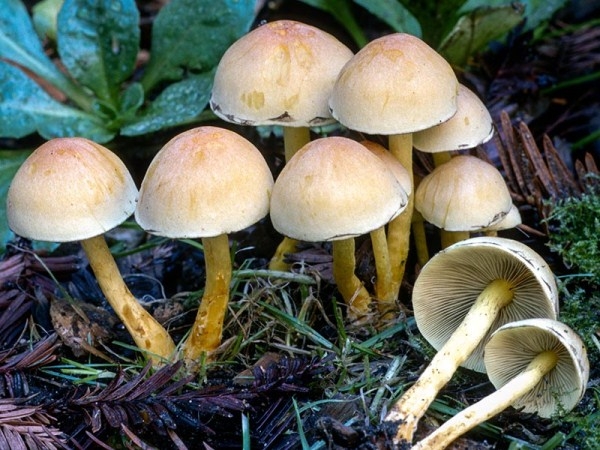
The last nuance that can also help in identifying honey agaric is its smell and taste. It is resorted to in the case when the mushroom has already been brought home, but is still in doubt, and previous checks could not give an unambiguous result. Firstly, the taste of false mushrooms has a pronounced bitterness, and it is unlikely that he will be able to induce you to further taste the product. If this did not bother you, then you need to evaluate the aroma. You should not feel mold in the common pyramid - no extraneous notes are added to the traditional mushroom aroma of edible mushrooms.

